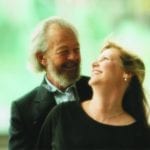Category: Thoughts & quotes from Sir David R. Hawkins, M.D., Ph.D. & Susan Hawkins

Hello, we want to share thoughts and quotes from Dr. David R. Hawkins and his wife, Susan Hawkins. We will keep you informed of upcoming events, as well. For available books, CDs, DVDs, and the Map of Consciousness, visit the Dr. David R. Hawkins product page. Find a Dr. Hawkins Study Group in your area.
The Ego Believes it is Real
To survive the ego has to believe it is real, and that it has a separate, independent existence. The other motive for its continuance is the belief that through the ego and its betterment, happiness can be found at last and the perfect conditions for it are secured. Therefore, the ego/mind constantly seeks control and gain in all its various forms and appearances. It seeks successes by whatever yardstick it measures that illusory goal. Happiness is always around the next corner, so it strains harder to achieve its goals.
At some point, the illusion breaks down and the opening for the start of the spiritual quest commences. The quest turns from without to within and the search for answers begins.”
from The Eye of the I: From Which Nothing Is Hidden, p. 115-116
Emotion is not an Indicator of Truth
Emotion is not an indicator of truth as it is both reflective and determinative of positionalities and conditioning.
… In ordinary life, the mind focuses on linear content, specific details, and emotionalized perception. The ego is thus energized consequent to projected, inflated estimates of worth or value. The process of energizing perceptions and desires is based on the ego’s expectations of gratification and reward. In contrast, in spiritual endeavor, the focus is not on the result but instead on alignment with an overall field of intention.
The ego is oriented towards specifics and the linear content of the field of vision. Its effect on vision itself is exclusive and limited in order to focus primarily on the near side of objects (so as to facilitate manipulation). Spirit is oriented towards context and the whole, and is thus inclusive and focuses on the far side of objects. Its field is diffuse rather than local.
To relate to the overall field rather than become involved in the details of specifics is characteristic of a contemplative lifestyle, which is conducive to spiritual evolution. In meditative practice also, there is a shift from focus on specifics at the outset but then progressive identification with the overall field and eventually with context itself.”
How God Can Be Recognized
Q: How can God be recognized unless one is already well along the path?
A: The first evidence of the presence of God is an awakening curiosity or interest in spiritual matters. That is the crack in the ego’s dam. When the person begins to desire or practice spiritual goals or pursue spiritual information, the Presence is already taking hold of one’s life.
If the desire arises to surrender all obstacles to love and to God, then God is already present in the form of willingness. When one reaches devotion, there is already quite an advanced Presence that is dissolving the ego and illuminating the way. Spiritual progress and discovery are accompanied by joy, which is the radiance of the Self and quickly replaces the surrendered ego’s positionalities. Spiritual inspiration increases in intensity each step along the way. When the self stops looking to the world or to the ego, it discovers that is source has been the Self all along.
The Best Question to Ask
Ask, “How am I aware or even know that I exist?” That question is the best that can be acted upon for it leads directly and nonverbally to the ever present Reality. Identify with that quality, capacity, or condition of ever present subjectivity which is experienced as an underlying awareness. It is consciousness itself. Identify with that consciousness instead of with the ‘what’ it is conscious about. That is the direct route to the Self. It is actually the only practice that leads directly through the doorway. There is nothing to know, to learn, or to remember.
From: “I: Reality and Subjectivity” (2003), Chapter 22: Applications, pp. 397–399
